

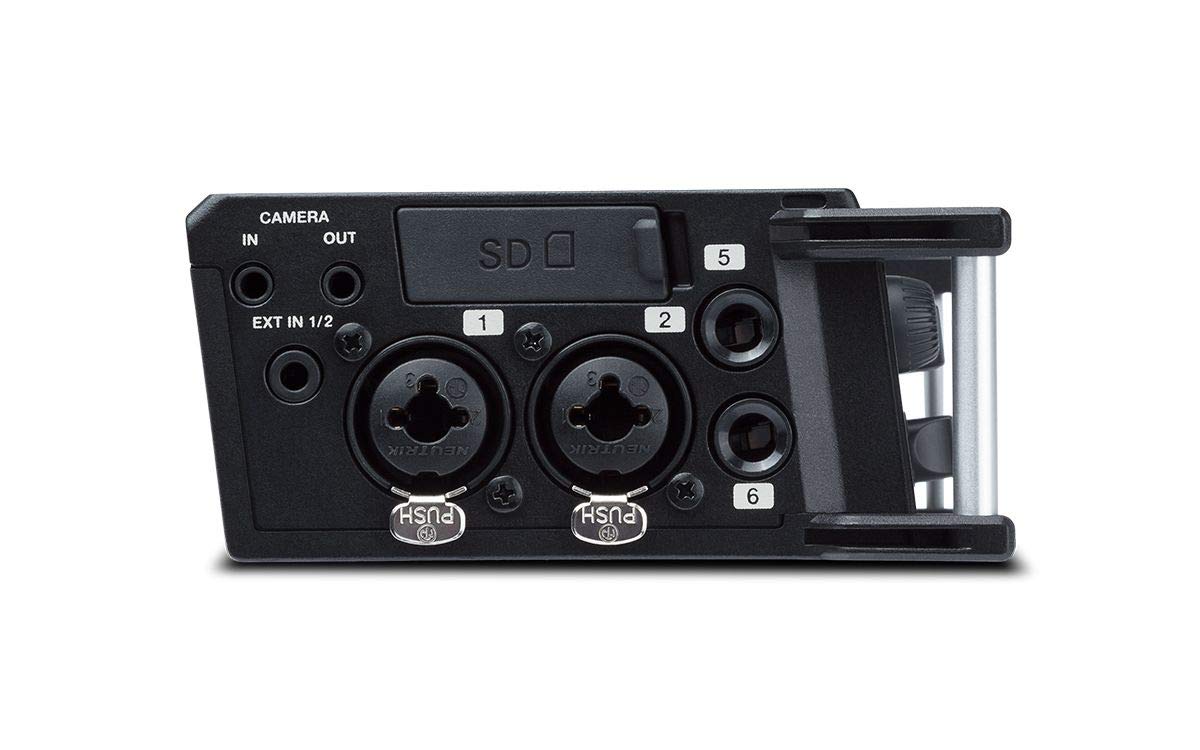
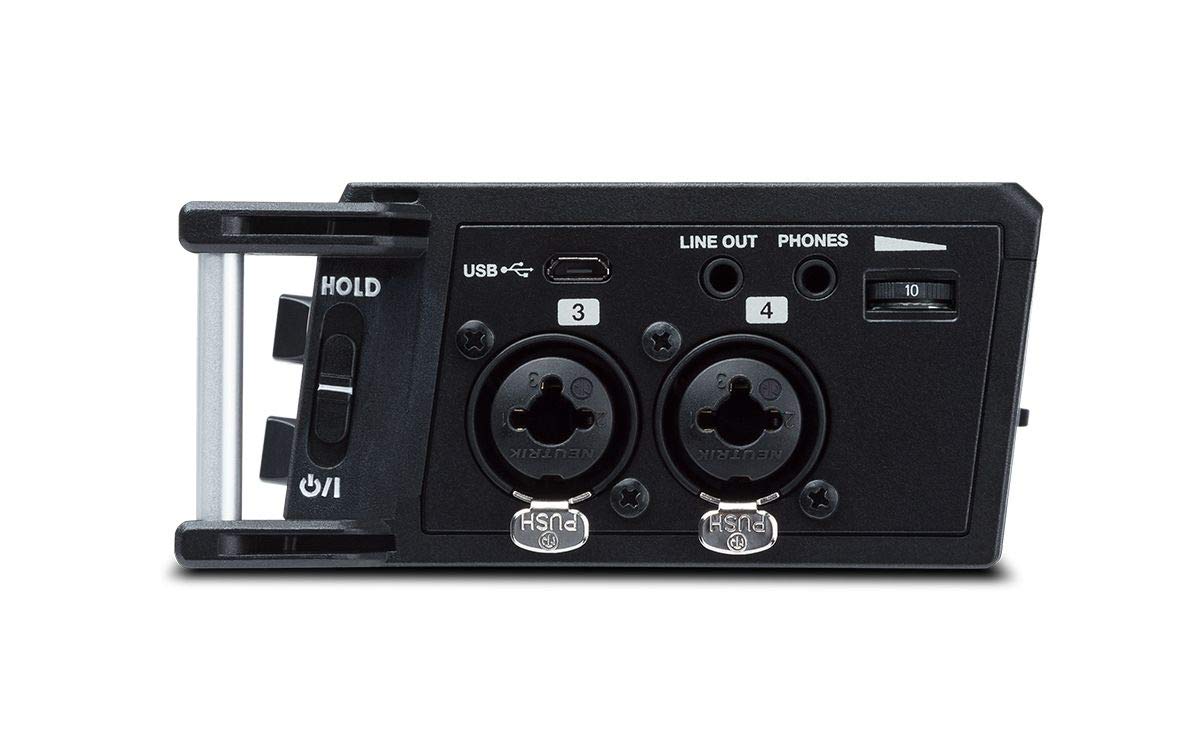
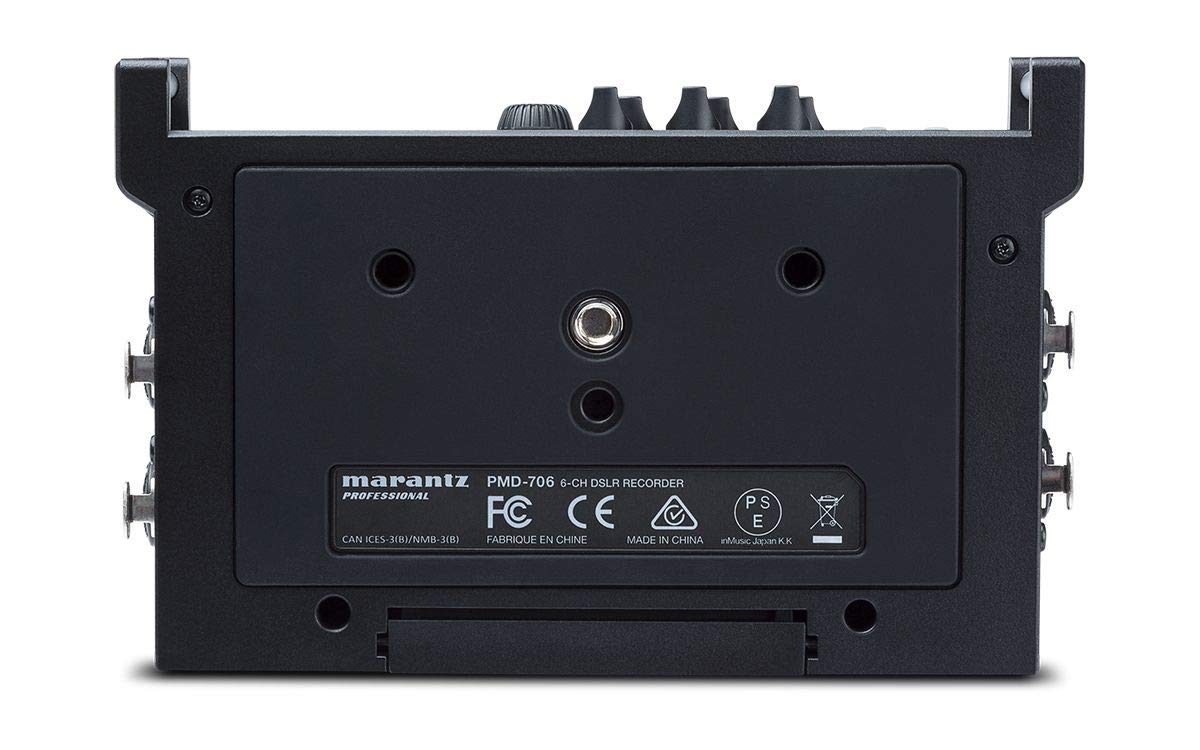
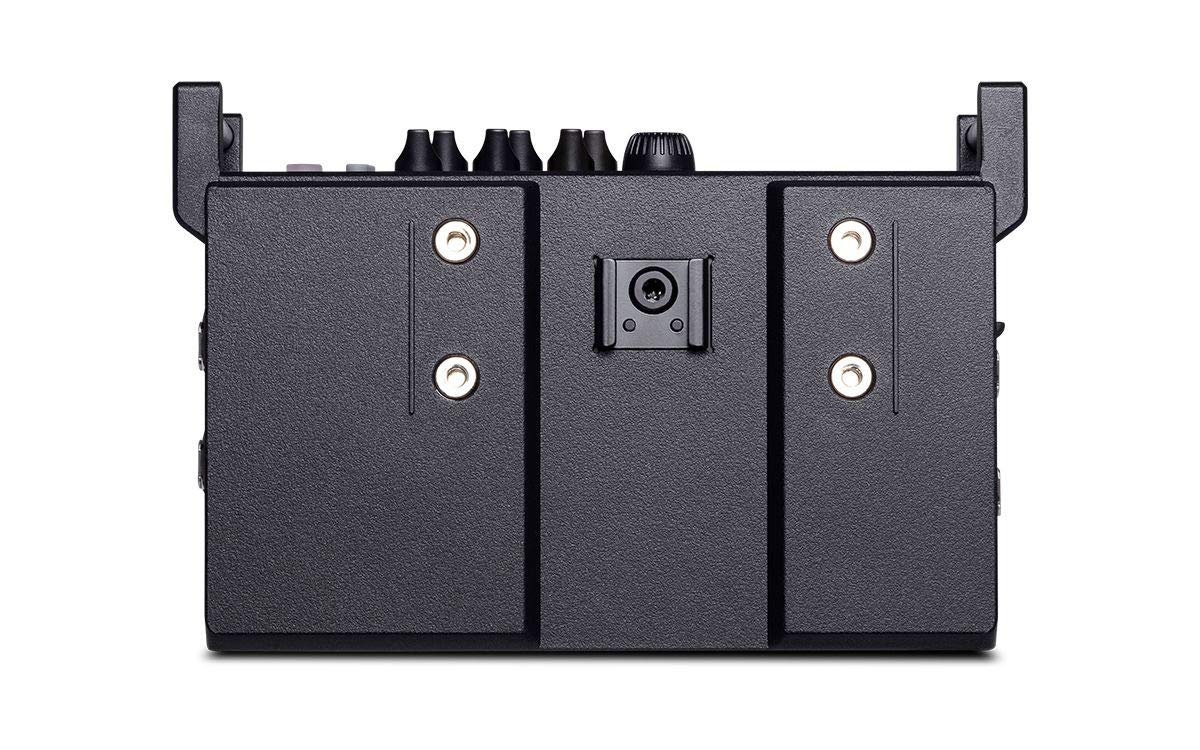
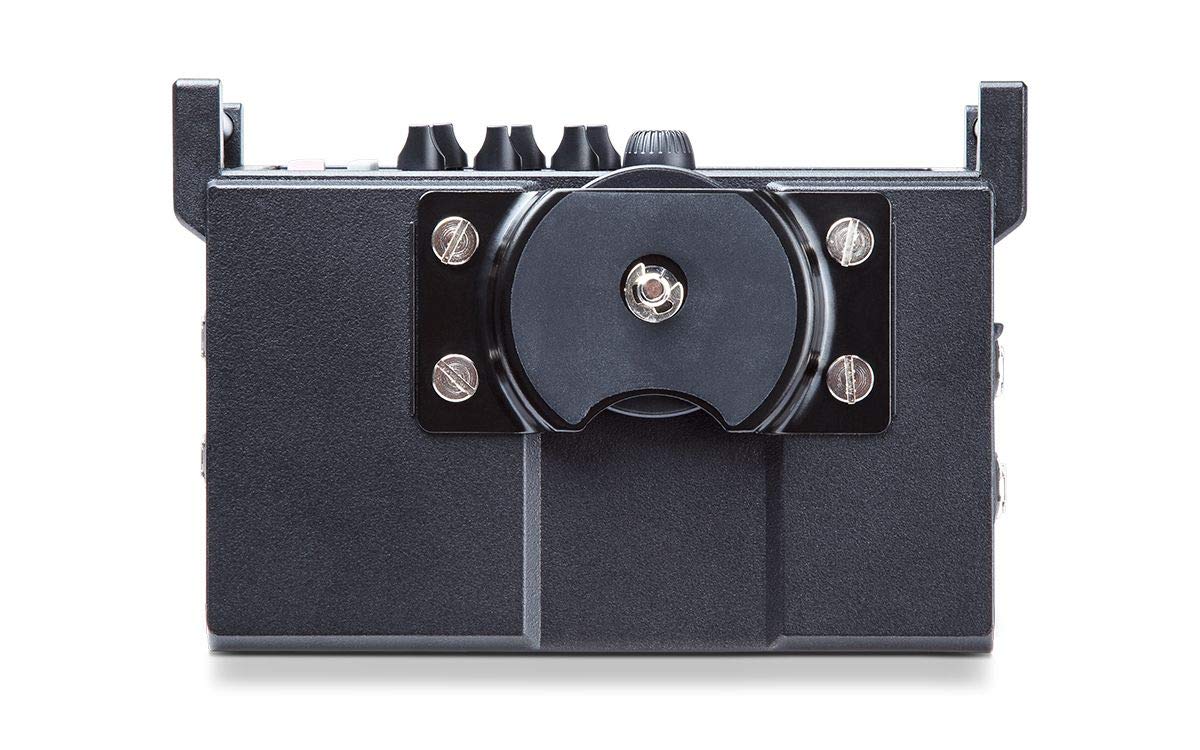

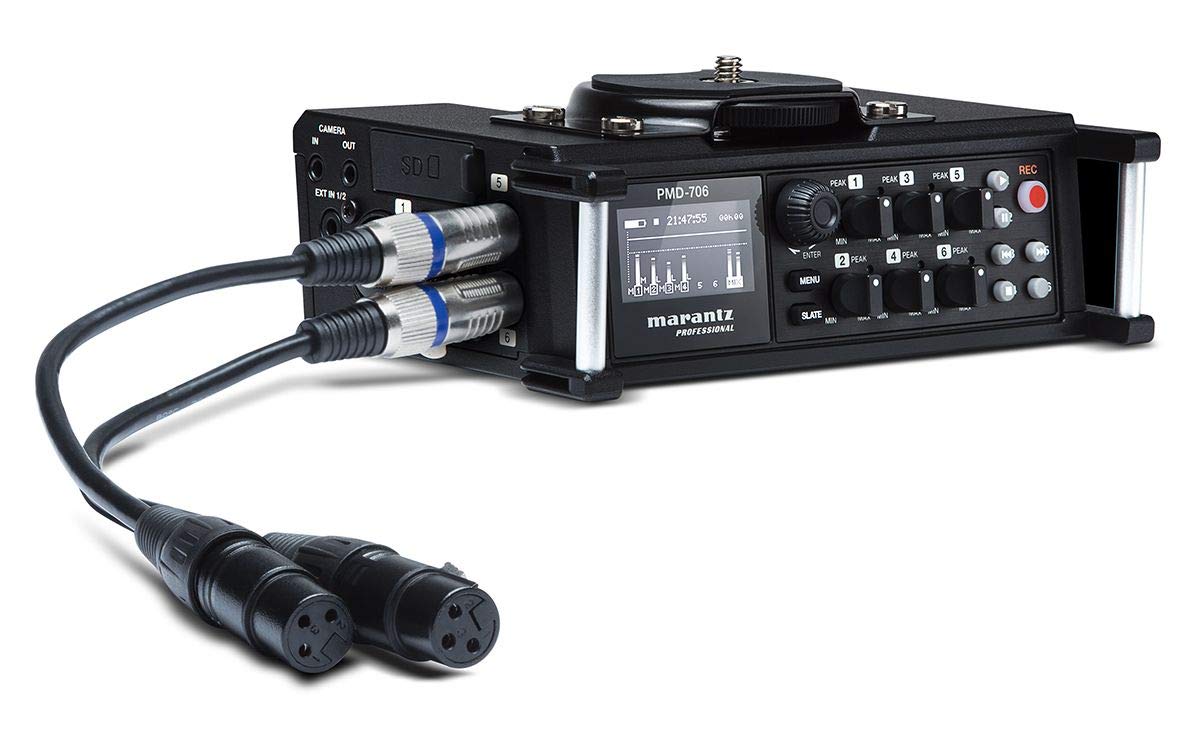
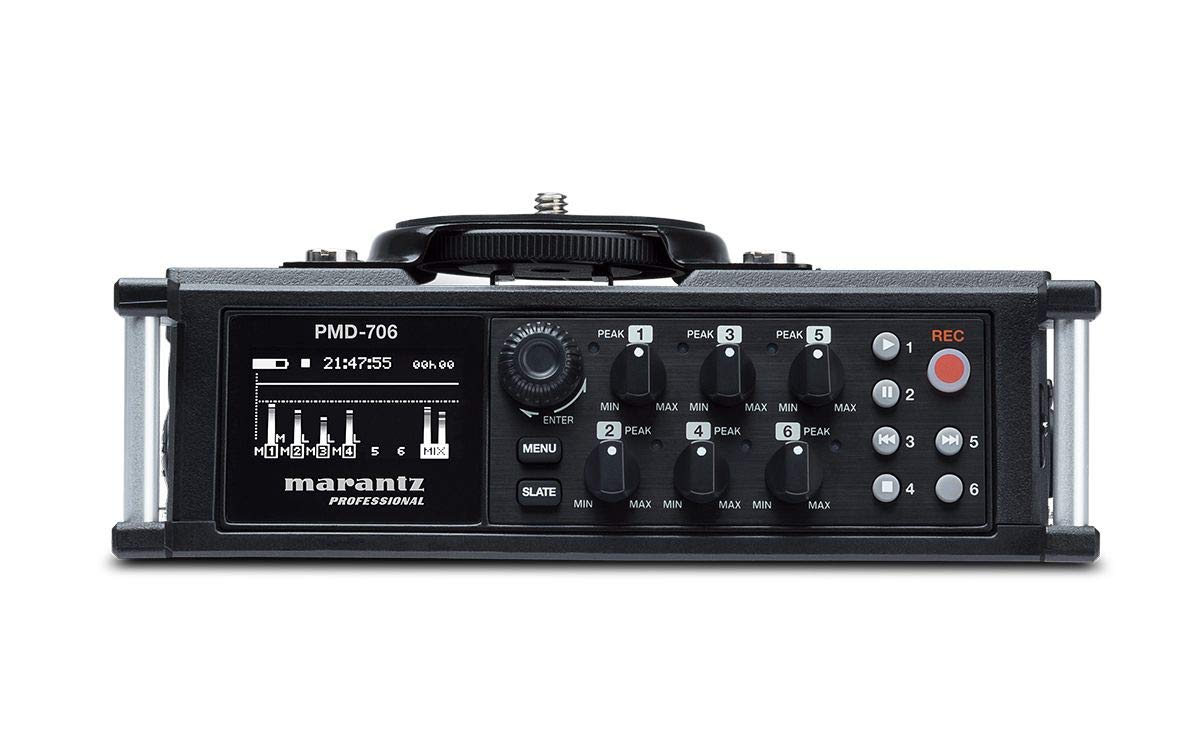
🎬 Elevate Your Sound Game with Marantz!
The Marantz Professional PMD-706 is a compact, handheld 6-channel DSLR recorder that delivers exceptional audio quality at 96kHz. Designed for professionals, it records directly onto SD/SDHC flash media, making it the perfect choice for filmmakers and content creators who require uncompromising sound fidelity in any situation.
D**T
Amazing price/performance!
I'm using this for actual field-recording, most recently an hour-long interview shoot with two people off in one of their living rooms. Its excellent for that (and that's what I selected it for).The mic pre-amps are pretty decent; I'm reasonably sure they don't match those in the top-end $1500 competition (the specs don't, anyway) -- but I paid about 1/7 of that for this, and I'm not using microphones from the top drawer, and I'm recording in real-world (i.e. noisy) locations; the noise floor of the pre-amps is not ever going to be the limiting factor in my recording.It *does* have all the basic useful functions, including dual recording (recording a second copy of a track turned down up to 12db, for a safety track), compressors and limiters on each channel, phantom power, locking XLR (actually Neutrik, xlr+1/4") connectors, and such.It has 4 XLR mic inputs, plus two 1/4" that can be configured for line in or more mics. The mic pre-amps on the 1/4" inputs are significantly noisier than the first 4 (obvious in tests; not mentioned in the specs). But the pricing on this is excellent for a 4-input recorder, and having spare tracks for safety tracks or line inputs is great.This, and a couple of new cardioid lavaliers, represent a HUGE increase in my ability to get good sound for things like that interview shoot (I was using a Zoom H2n before; another great value, at a lower level), and I made that step up for just over $300 (that includes the microphones). If you have more money than that -- you might spend it on microphones before spending it on an even better recorder. And if you're relatively new to this -- this lets you get started without breaking the bank, and in a year or two if you need to upgrade, you'll be making that decision from real-world knowledge.If you have infinite money, definitely buy the $1500 Sound Devices Mix-Pre II 6-input box, and a couple of really good $1200 shotguns, plus stands and booms for them, plus some really good Sennheiser lavaliers, and you'll be a LOT better equipped than me. I think I'm getting maybe 85% of the sound quality of such a setup, for about 7% of the price. Also if you're doing field recording for professional films for theatrical-release -- but if you're doing that, what the heck are you doing taking *my* advice out of an Amazon review?Perhaps it's because I came to video from still photography (in 1970, but that's another story), but I've always found sound the hardest part of any video project. Adding this sound equipment has finally brought me up to the point where I can comfortably and reliably get good sound.
M**E
Perfect prosumer device to learn pro skills
TLDR: great device but you’ll have to develop some skills. It’s not like a Blue Yeti which is an out of the box solution. I was moving from a Yeti to an XLR/DSLR system and this was the perfect device... after getting better cables and hours of trial and error.Perfect prosumer device. I’m not a pro sound engineer though I’ve done enough filmmaking/VO recording to have a clue. Regarding most sound problems, I think they’re pretty much the typical pro-consumer issue: upgrading to better equipment equals worse sound until you understand the settings and equipment. It was very important for me to learn about balanced/unbalanced input/output. Until then some of my recordings were unusable even after post.Regarding the preamps, when monitoring from the headphone out I get almost no noise if I have the menu input set to low gain and the gain dial at less than 3 o’clock on a studio mic in an uncontrolled environment. But basically any software “auto noise reduction” virtually eliminates the hiss. I’ve heard the clicks on my device; they were dependent on the USB power source. Battery power results in no extra noise. Recording to device is quietThe number of input and outputs is incredible for the price. For the price I think it’s an outstanding device but you’ll need skills to get the most out of it.
L**A
Excellent DLSR on-camera mixer for events with multiple speakers
I purchased this to manage the inputs of 2 Sennheiser G3 wireless lav mics, 1 Sennheiser on-camera boom and 1 Sennheiser handheld mic. It definitely gets the job done and the hardware is pretty good. You can power it with AA batteries or with a mini USB connection, which I'd advise using for longer sessions as the AA don't last all that long. A few notable cons... it will power down if you are not actively recording. So if your plan is to use on-camera recording and don't bother with the SD, you must remember to hit record. This isn't a big deal because most users are going to want the files recorded to the card. The other thing I would like is to have an option to leave the display on so you can monitor the levels. It turns off after a minute or so. I haven't looked into options to turn this off, but I don't think there is much in the way of custom settings. Minor gripe, startup takes a good 10-15 seconds. Not a big deal, just sometimes annoying when you're trying to run and gun. Other than that, there aren't many rings like this on the market and the price is can't be beat.
D**R
Terrible PreAmp Noise.
There is so much buzz in the pre-amp that it is unusable. I can remove some of it, but it changes the audio tone so much that the final file cannot be used in our videos. The acoustic floor is far too prominent and anything above a three on the gain creates a horrible pulsing hum. Big pass on this one. I will be returning this.
R**D
Sound to go with DSLR video
This is the best solution so far to bring really well balanced audio to a video being made on a DSLR. I like the fact that there are 4 channels with XLR sockets, and two more channels that are accessible by a miniature phone plug. Phantom power can be supplied to each channel individually. Power from a USB connected Li-ion battery gives hours of run time.
J**T
Not Enough POWER
First, the product description is for nothing. What's in it? How's it work? What do I need? Second the directions are confusing as hell. Phantom power blows up the device? No, actually. It's desperately needed in order to make the mics go. That of course drains the batteries in under half an hour and there's no AC adapter which is idiotic. On top of that, some of the channels did not record the full session. At other times, getting the thing to record at all was impossible. "RECORD" means the little red light comes on right? Nope. The light was obviously being borrowed by Rudolph. I had really high hopes for this device based on previous experience. I was severely disappointed.
Trustpilot
5 days ago
4 days ago